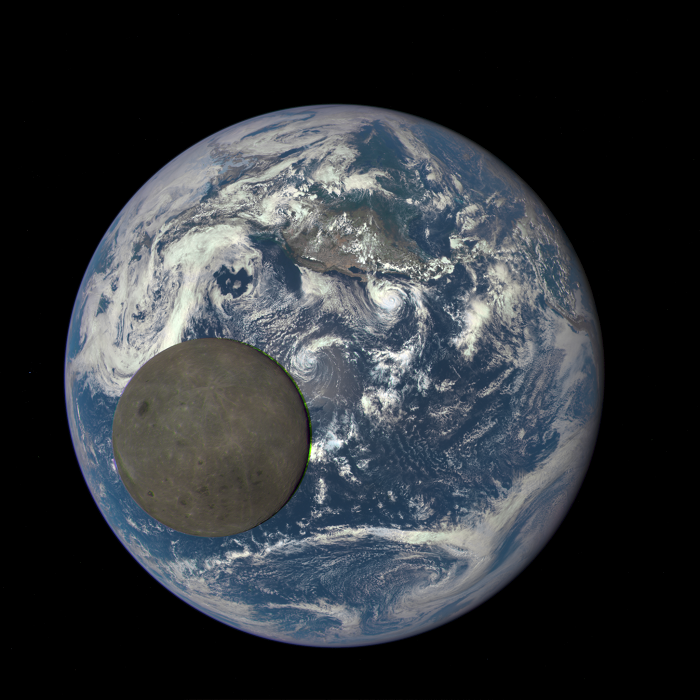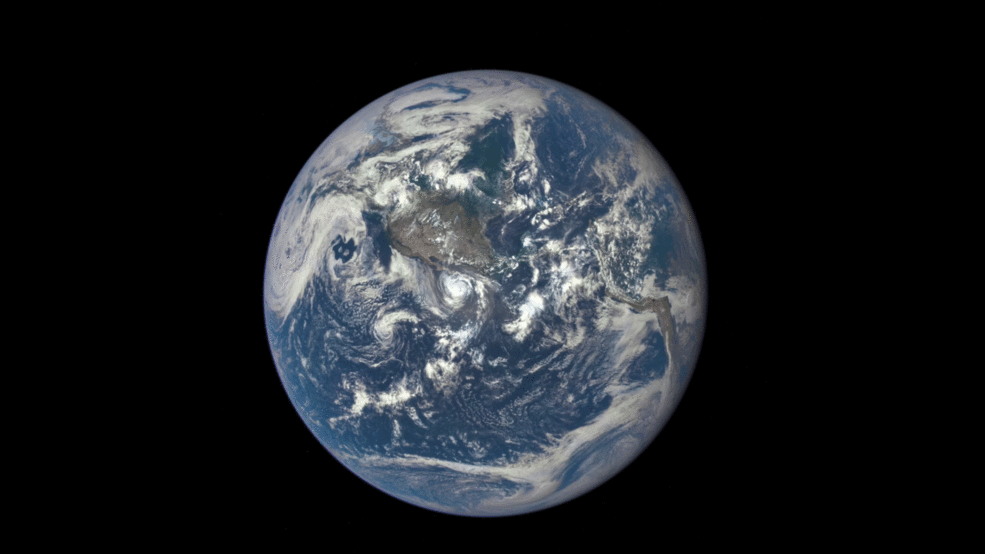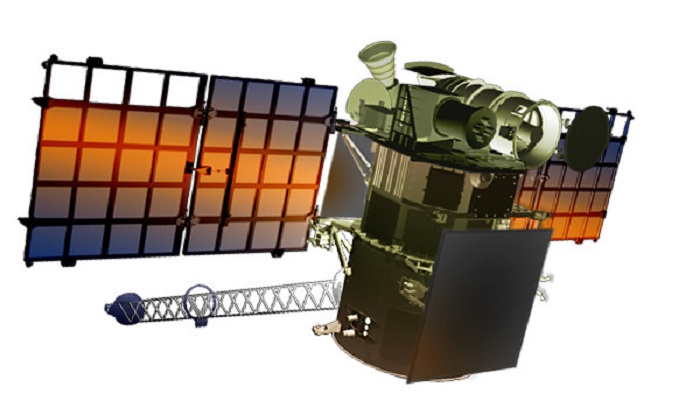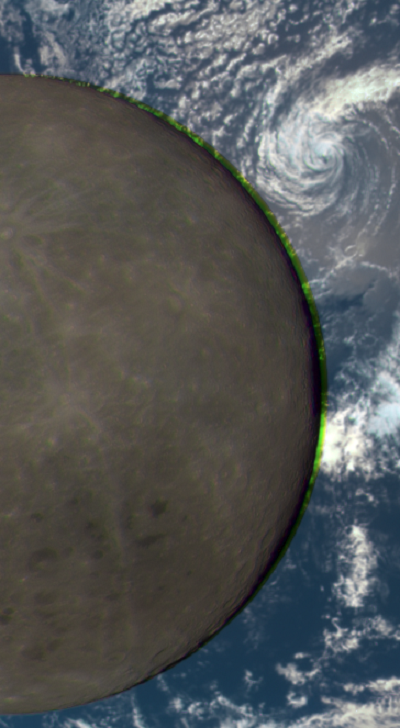
Now there’s something you can truly say you don’t see every day. The image above is the far side of the moon, illuminated by the sun, as it crosses between NASA’s DSCOVR spacecraft and the Earth, all at a distance covering one million miles.

Specifically, the image shows the moon moving over the Pacific Ocean near North America. In the upper left hand corner is the North Pole which, it turns out, gives us a nice reflection of the planet’s orbital tilt from the vantage point of the satellite.
The technology that captured this stunning photograph is the Earth Polychromatic Imaging Camera (EPIC), a four-megapixel CCD camera and telescope that is outfitted aboard the DSCOVR satellite which, it’s worth noting, is presently orbiting Earth at a distance of one million miles away.

EPIC’s “natural coloring” of Earth is generated by combining three separate monochrome exposures taken by the camera in quick succession. It takes a series of 10 images using different narrowband spectral filters (ranging from ultraviolet to near infrared) to produce several different science products. The red, green, and blue channel images are then used together to produce these color images.
Per this image in particular, by combining three images taken about 30 seconds apart while the moon is moving in front of the camera, a noticeable artifact was produced on the right side of the moon. Diving a bit deeper, due to the fact that the moon moved between the times the first (red) and last (green) exposures were made, a slight green offset appears on the right side of the moon where the three exposure are combined. Additionally, the natural movement of the moon produces a slight red and blue offset on the left side of the moon.


The purpose of the satellite is to monitor real-time solar wind for the National Oceanic and Atmospheric Administration. It also maintains a constant view of the fully illuminated Earth as it rotates for the purpose of providing scientists with observations of ozone, vegetation, cloud height and aerosols in the atmosphere. Additionally, once the satellite beings regular observations next month, EPIC will be providing a series of Earth images so as to allow a study of daily variations over the entire globe. And per this schedule, twice a year the camera will capture the moon and Earth together as DSCOVR’s orbit crosses the orbital plane of the moon.
Worth noting about the rarity of seeing this side of the moon is that fact that the same side of the moon always faces an earthbound observer. This is due to the fact that the moon is tidally locked to Earth, which means its orbital period is the same as its rotation around its axis.
Scientists did not get a visual of the far side of the moon until 1959 when the Soviet Luna 3 spacecraft first returned images. Since then, several NASA missions have imaged the lunar far side in far greater detail.
Two things worth noting about this picture: one, if you take a closer look at the far side, you’ll note it lacks the large, dark, basaltic plains that are fairly prominent on the Earth-facing side. Second is that despite the fact that it’s being referred to as the “dark side of the moon”, the sun is actually hitting it, but its brightness pales in comparison to how radiant our planet is.
“It is surprising how much brighter Earth is than the moon,” said Adam Szabo, DSCOVR project scientist at NASA's Goddard Space Flight Center in Greenbelt, Maryland. “Our planet is a truly brilliant object in dark space compared to the lunar surface.”
If you find images like this interesting, then note that once EPIC begins regular observations next month, NASA will post daily color images of Earth to a dedicated public website. The images will show different views of the planet as it rotates through the day, and will be made available 12 to 36 hours after the Agency has acquired them.
Via NASA
Advertisement
Learn more about Electronic Products Magazine





